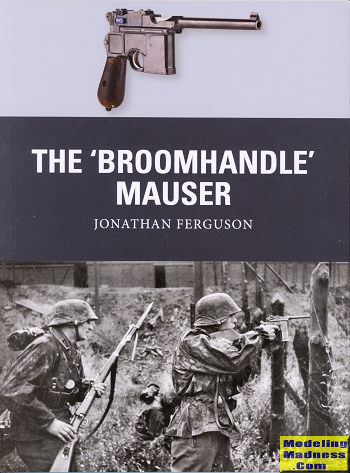 In the
later part of the nineteenth century, the pistol of choice was overwhelmingly
the revolver. The type had been improved to a high level of reliability, but
often users wanted more. That more was more bullets before reloading. So the
move towards this goal was made.
In the
later part of the nineteenth century, the pistol of choice was overwhelmingly
the revolver. The type had been improved to a high level of reliability, but
often users wanted more. That more was more bullets before reloading. So the
move towards this goal was made.
Probably the most well known of these sorts of pistols
is the Colt Model 1918. Yet before that was perfected, Mauser decided to give it
a go. They developed a most distinctive pistol that had a ten round magazine in
front of the trigger housing. The gun was cleverly designed and was able to be
disassembled for cleaning without any specialist tools. Indeed, the only screw
in the gun held the handle pieces together.
Like all early weapons of this type, it went through a
number of variations as features that didn't work quite as well were modified
and upgraded. As nice as the gun was, it was unable to get the huge contracts
that Mauser wanted. Indeed, the German army chose a competitor, the Luger P08
instead. Still it did have fairly good export success being built in China and
Spain to name a few places.
The Mauser rifle was the staple of the German army and
it was this gun that the pistol was loosely based. In fact, the pistol came with
a stock which also doubled as a holster. This allowed the user to obtain ranges
of accuracy that were not possible with other pistols. However, it took time to
attach and those few seconds were often too long when it needed to be used right
away.
Still, it was a very distinctive gun and that, as much
as anything else explains its popularity. It was used in countless movies and
books, thanks to how it looked and its ability to fire more rounds than your
standard pistol. It was also rifled for different sizes of ammunition and while
it didn't have the 'stopping power' of, say a 45, it was still deadly. Its
complexity often brought damning comments from some, but it was also highly
praised. None other than Winston Churchill used the gun during the Boer War and
credits it with saving his life.
In line with other books in this series, we get the full
story of the design and development of the gun, including pointing out the
differences in the variants. We are also treated with commentary from those who
used it and how they felt about it. It makes for another fascinating book in
this series and those who have an interest in this somewhat unusual piece will
find this to be a great book.
December 2017
Copyright ModelingMadness.com. All rights reserved.
For more on the complete line of Osprey books,
visit www.ospreypublishing.com
If you would like your product reviewed fairly and quickly, please
contact
me or see other details in the Note to
Contributors.
 In the
later part of the nineteenth century, the pistol of choice was overwhelmingly
the revolver. The type had been improved to a high level of reliability, but
often users wanted more. That more was more bullets before reloading. So the
move towards this goal was made.
In the
later part of the nineteenth century, the pistol of choice was overwhelmingly
the revolver. The type had been improved to a high level of reliability, but
often users wanted more. That more was more bullets before reloading. So the
move towards this goal was made.